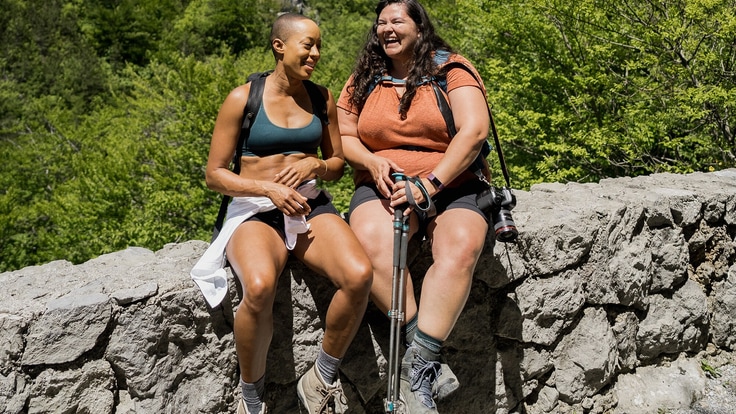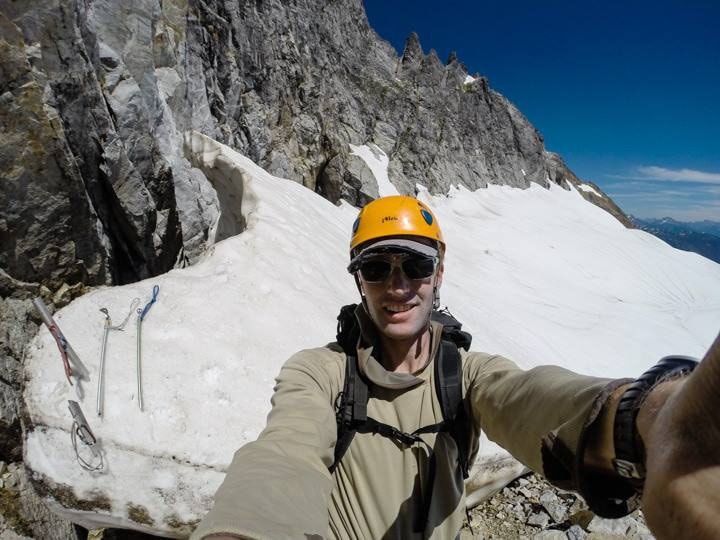Stepping outside into a muggy, sticky, stifling wall of hot and humid weather can be pretty miserable. Unfortunately, there's no magic fix for that swampy feeling, which means improving your comfort is mostly about finding ways to lessen the unpleasantness by wearing clothes that help keep you cool.
Here are four tips for dealing with humidity by choosing the right clothing:
1. Wear Clothing that Hangs Slightly off Your Body
The single most important thing you can do to improve your comfort in high humidity is to wear lightweight clothing that won't cling to your skin. Woven fabrics or those with some texture, and a looser fit, usually do a good job.
Clothing that does cling to your body will soak up sweat and then stay close to your skin, which will amplify the discomfort. To limit this, find clothing that provides a physical separation from your body, even just a slight one, rather than hugs it.
Certain fabric constructions are more adept at providing distance. Often times, lightweight woven fabrics will naturally drape off your body a bit better than knits. You can also look for fabrics with some texture to lift the fabric off your skin slightly, such as seersucker or pique.
2. Choose Fabrics that Move Moisture Away from Your Body
To keep sweat from sitting uncomfortably on your skin, find garments that advertise moisture-management features like absorbency or wicking. Moisture-managing fabrics quickly move sweat off your skin. Fortunately, many garments built for outdoor use are designed to do exactly this. You'll see "moisture management" or "wicking" called out on many clothing items made from synthetics, like polyester and nylon, but merino wool and cotton can also be good options (see note on cotton below). When you have multiple options, choose the lightest weight fabric.
The key here is to pair fabric performance with clothing that drapes slightly off your body. On a nonhumid summer day, wicking alone might be enough to keep you comfortable because the sweat will be pulled away from your body where it can easily evaporate, which will leave you feeling cooler. However, on a hot, humid day, the air around you is nearly or completely saturated with water vapor, leaving no place for the sweat to go but sit on your skin or be absorbed by your clothing. If your clothing hangs away from your skin, even just a little, you'll be a bit more comfortable than you would be while wearing wet, clingy clothing.
A word about cotton: A common outdoor mantra is, "cotton kills." Cotton gets its bad reputation because it absorbs moisture and has poor insulating properties when wet. This can be uncomfortable and potentially dangerous if the temperature drops dramatically. But, on outings without a threat of being trapped outside in the cold, lightweight cotton can be a fine option. It will absorb the sweat, and if the garment drapes properly, it can be quite comfortable.
3. Wear Quick-Dry Clothing
The faster your shirt or pants dry when soaked with sweat (that won't quickly evaporate on hot, humid days), the less time you'll spend in swampy clothes. Generally speaking, the lighter the fabric, the quicker it will dry, but you can also look for clothing that's specifically advertised as quick drying. Quick-dry clothing won't eliminate humidity, but it will at least dry a bit faster than clothing with a long drying time.
4. Open Up Vents
Technical clothing built for outdoor recreation and travel often has vents and/or mesh panels built-in. These features, plus a looser fit, help to increase airflow on hot, humid days, and even the smallest amount of airflow can greatly improve drying time and aid in evaporation. So make sure to open vents wide when the humidity is high.
5. Other Clothing Tips for Hot Weather
- Choose light colors: Wearing light colors that reflect the sun's rays rather than absorb them (as dark colors can) helps keep you cool. Look for shirts, shorts, pants and hats in white, tan or khaki.
- Choose UPF-rated clothing: All clothing blocks the sun's rays to a certain extent, but clothing that has a UPF rating has been tested to ensure it provides the rated level of protection. Common ratings include UPF 15, UPF 30 and UPF 50+. Learn more in our Sun Protection Clothing Basics article.
- Put a hat on: In humid weather, if you need sun protection, the same rules apply for hats as with other clothing: Look for vents, lightweight materials, a looser fit, and quick-drying performance. A baseball cap provides OK shade, but a sun hat with a brim that goes all the way around is even better. If the sun isn't out when it's humid, you'll probably feel better with nothing on your head.
- Cool your neck: A bandana, sun-protective neck gaiter or other lightweight cloth can be dunked in water and worn over your head or around your neck to keep the back of your neck cool and covered. In humid weather, remove the cloth when it no longer feels cool
- Carry a hydration pack: It might seem like a small difference, but having a sip tube always at the ready will make you more likely to hydrate frequently than if you have to reach for a water bottle.
To learn more about staying comfortable in hot weather, see our Hot-Weather Hiking Tips article.

